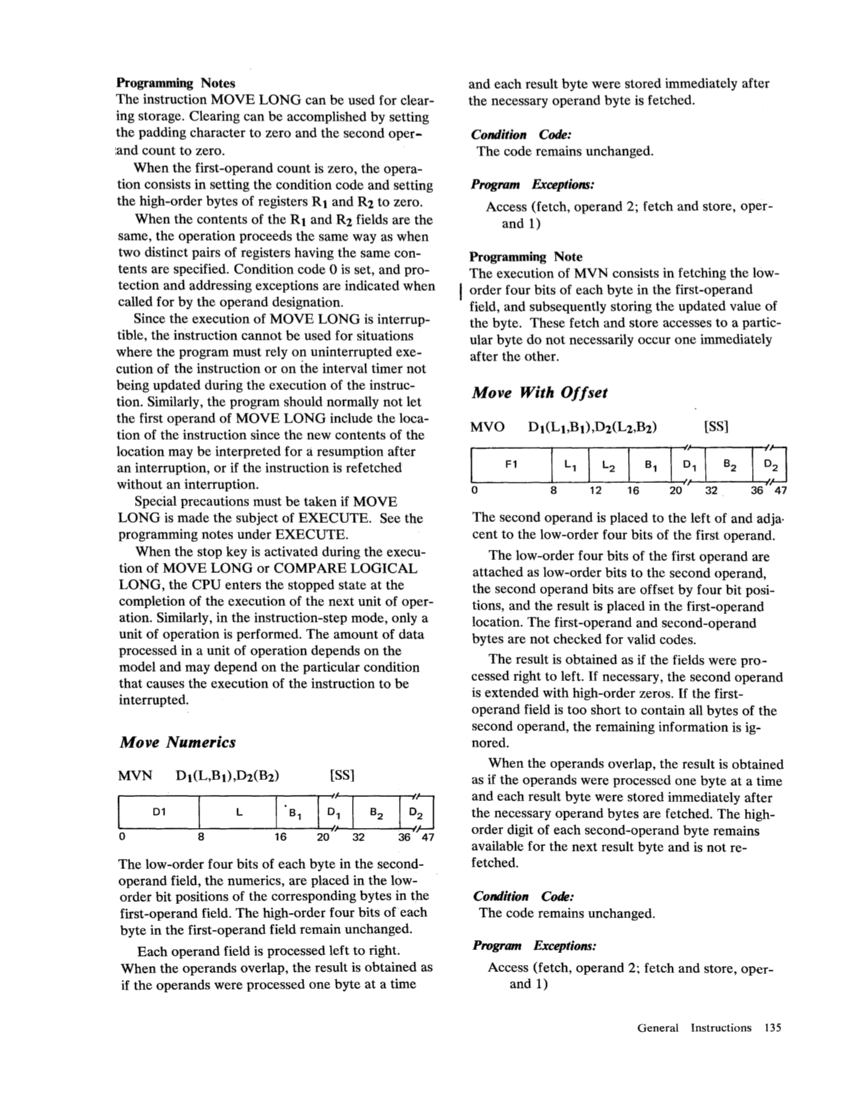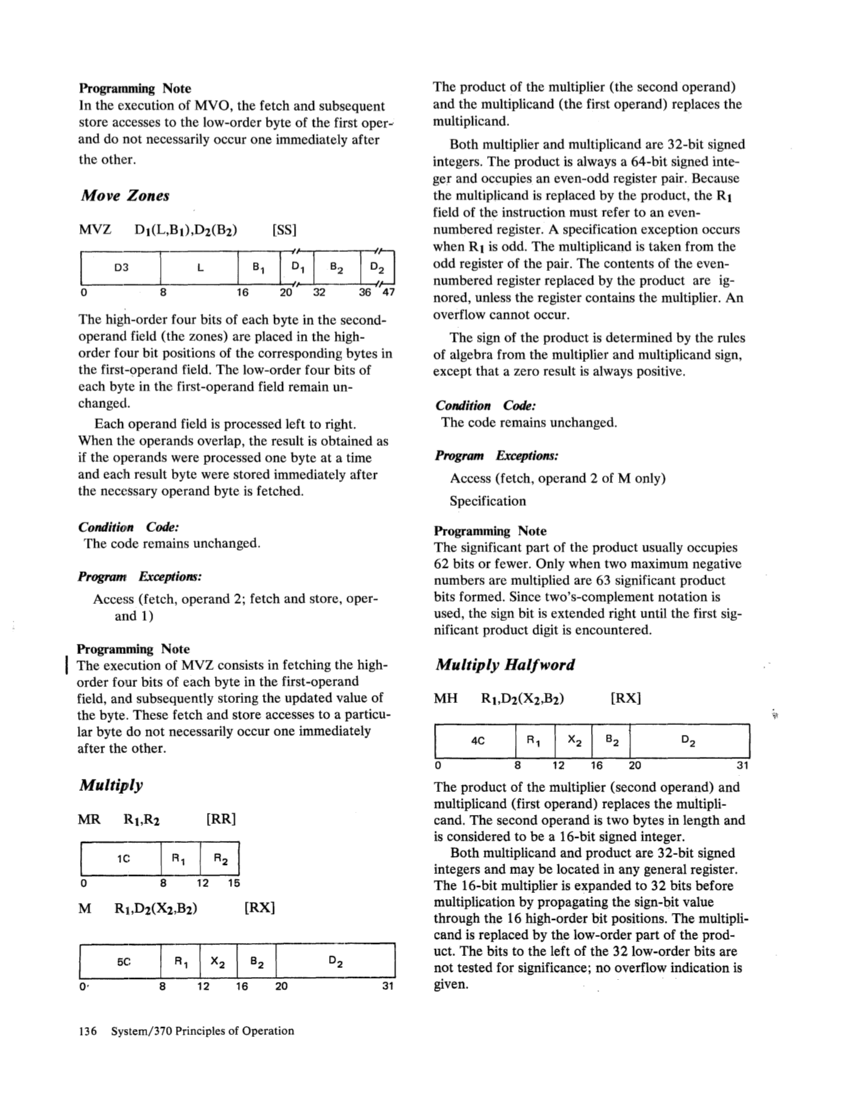ing storage. Clearing can be accomplished by setting
the padding character to zero and the second oper
:and count to zero.
When the first-operand count is zero, the opera
tion consists in setting the condition code and setting
the high-order bytes of registers Rl and R2 to zero.
When the contents of the R 1 and R2 fields are the
same, the operation proceeds the same way as when
two distinct pairs of registers having the same con
tents are specified. Condition code
tection and addressing exceptions are indicated when
called for by the operand designation.
Since the execution of
tible, the instruction cannot be used for situations
where the program must rely on uninterrupted exe
cution of the instruction or on
being updated during the execution of the instruc
tion. Similarly, the program should normally not let
the first operand of
tion of the instruction since the new contents of the
location may be interpreted for a resumption after
an interruption, or if the instruction is ref etched
without an interruption.
Special precautions must be taken if
programming notes under EXECUTE.
When the stop key is activated during the execu
tion of
completion of the execution of the next unit of oper
ation. Similarly, in the instruction-step mode, only a
unit of operation is performed. The amount of data
processed in a unit of operation depends on the
model and may depend on the particular condition
that causes the execution of the instruction to be
interrupted.
Move Numerics
MVN [SS]
The low-order four bits of each byte in the second
operand field, the numerics, are placed in the low
order bit positions of the corresponding bytes in the
first-operand field. The high-order four bits
byte in the first-operand field remain unchanged.
Each operand field is processed left to right.
When the operands overlap, the result is obtained as
if the operands were processed one byte at a time
and each result byte were stored immediately after
the necessary operand byte is fetched.
Condition Code:
The code remains unchanged.
Program
and 1)
Programming
field, and subsequently storing the updated value of
the byte. These fetch and store accesses to a partic
ular byte do not necessarily occur one immediately
after the other.
Move With Offset
F1
The second operand is placed to the left of and
The low-order four bits of the first operand are
attached as low-order bits to the second operand,
the second operand bits are offset by four bit posi
tions, and the result is placed in the first-operand
location. The first-operand and second-operand
bytes are not checked for valid codes.
The result is obtained as if the fields were pro
cessed right to left. If necessary, the second operand
is extended with high-order zeros. If the first
operand field is too short to contain all bytes of the
second operand, the remaining information is ig
nored.
When the operands overlap, the result is obtained
as if the operands were processed one byte at a time
and each result byte were stored immediately after
the necessary operand bytes are fetched. The high
order digit of each second-operand byte remains
available for the next result bytc and is not rc
fetched.
Condition Code:
The code remains unchanged.
Program Exceptions:
Access (fetch, operand
and 1)
General Instructions 135










































































































































































































































































































































